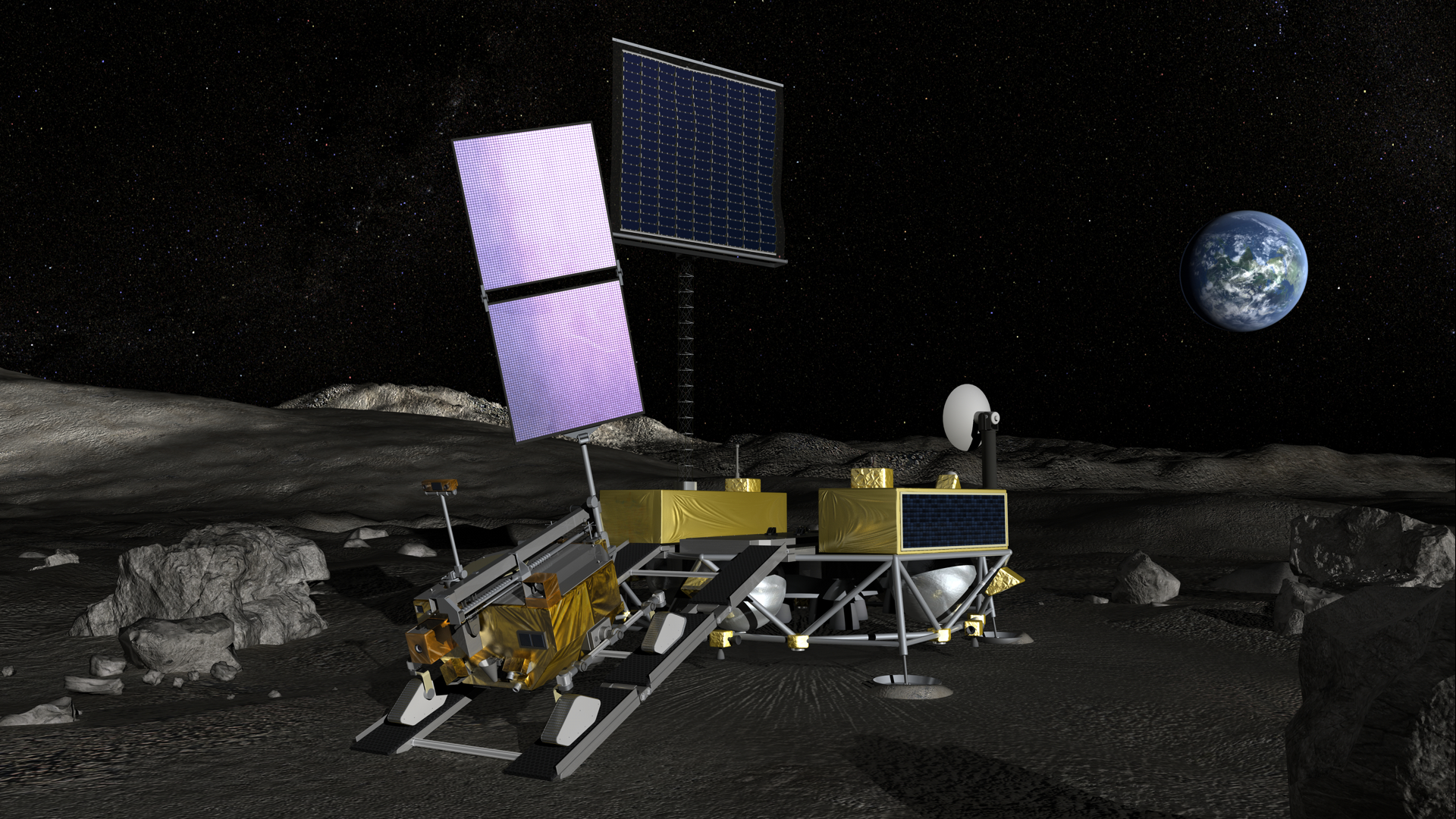Japan and India plan 2025 moon mission to hunt for water near the lunar south pole
Japan is providing the rover and launcher, and India is providing the lander for LUPEX mission.

The Japan Aerospace Exploration Agency (JAXA) Is making progress on its rover for a joint mission with India to the south pole of the moon.
JAXA and the Indian Space Research Organisation (ISRO) agreed to the cooperative project back in 2019. ISRO, which recently made India the fourth country to soft-land on the moon, will build the mission's lander, while JAXA will be responsible for the launch and a lunar rover.
The mission is slated to launch no earlier than 2025 on Japan's new H3 rocket, according to JAXA. The agency is meanwhile in the basic design phase of the rover with teams running tests in sand designed to simulate lunar regolith, the fine dust that covers the moon's surface. The tests will verify that the vehicle can perform its key science objectives on the moon.
Related: India tries waking up Chandrayaan-3 moon lander, without success (so far)
"The LUPEX project will investigate the quantity and quality of water on the moon. We hope to use this data as a basis for considering sustainable human activities on the moon in the future," Natsu Fujioka, who is part of the team developing the rover, said in a JAXA statement.
The rover will be autonomous and will drive to seek out water with its science payloads. It will also be able to drill into the lunar surface to collect samples which will then be analyzed by the rover's instruments. Each of these capabilities is a feat in itself, but combining these and within weight constraints, presents a serious task.
"It is a challenging project to transport a rover weighing several hundred kilograms loaded with these instruments to the moon, move it around, and measure the collected samples in situ," Fujioka said.
Breaking space news, the latest updates on rocket launches, skywatching events and more!
Other agencies will also be sending science payloads on the mission. NASA's Neutron Spectrometer will seek out hydrogen up to 3.3 feet (1 meter) below the surface at the south pole, while the European Space Agency's (ESA) Exospheric Mass Spectrometer will assess gas pressure and chemical signatures at the surface.
"Analyses of various observational data over recent years suggest that water may be present in the lunar polar regions, the lunar polar regions being those areas around the moon's north and south poles," said Hiroka Inoue, who is involved in international cooperation and the selection of candidate landing site for LUPEX.
"If water can be found in these regions, it could be used as an energy source for future human activities on the moon. For this reason, countries are aggressively pursuing lunar exploration."
India launched the successful Chandrayaan-3 lunar landing mission this year, while Russia failed with its Luna-25 landing mission. Next year, NASA is tentatively scheduled to launch Artemis 2 in November 2024 to send astronauts around the moon. China meanwhile seeks to collect the first ever samples from the far side of the moon and bring them to Earth in 2024.
Other missions under NASA's Commercial Lunar Payload Services (CLPS) program and a Japanese commercial lander are also planned to shoot for the moon next year.

Andrew is a freelance space journalist with a focus on reporting on China's rapidly growing space sector. He began writing for Space.com in 2019 and writes for SpaceNews, IEEE Spectrum, National Geographic, Sky & Telescope, New Scientist and others. Andrew first caught the space bug when, as a youngster, he saw Voyager images of other worlds in our solar system for the first time. Away from space, Andrew enjoys trail running in the forests of Finland. You can follow him on Twitter @AJ_FI.
